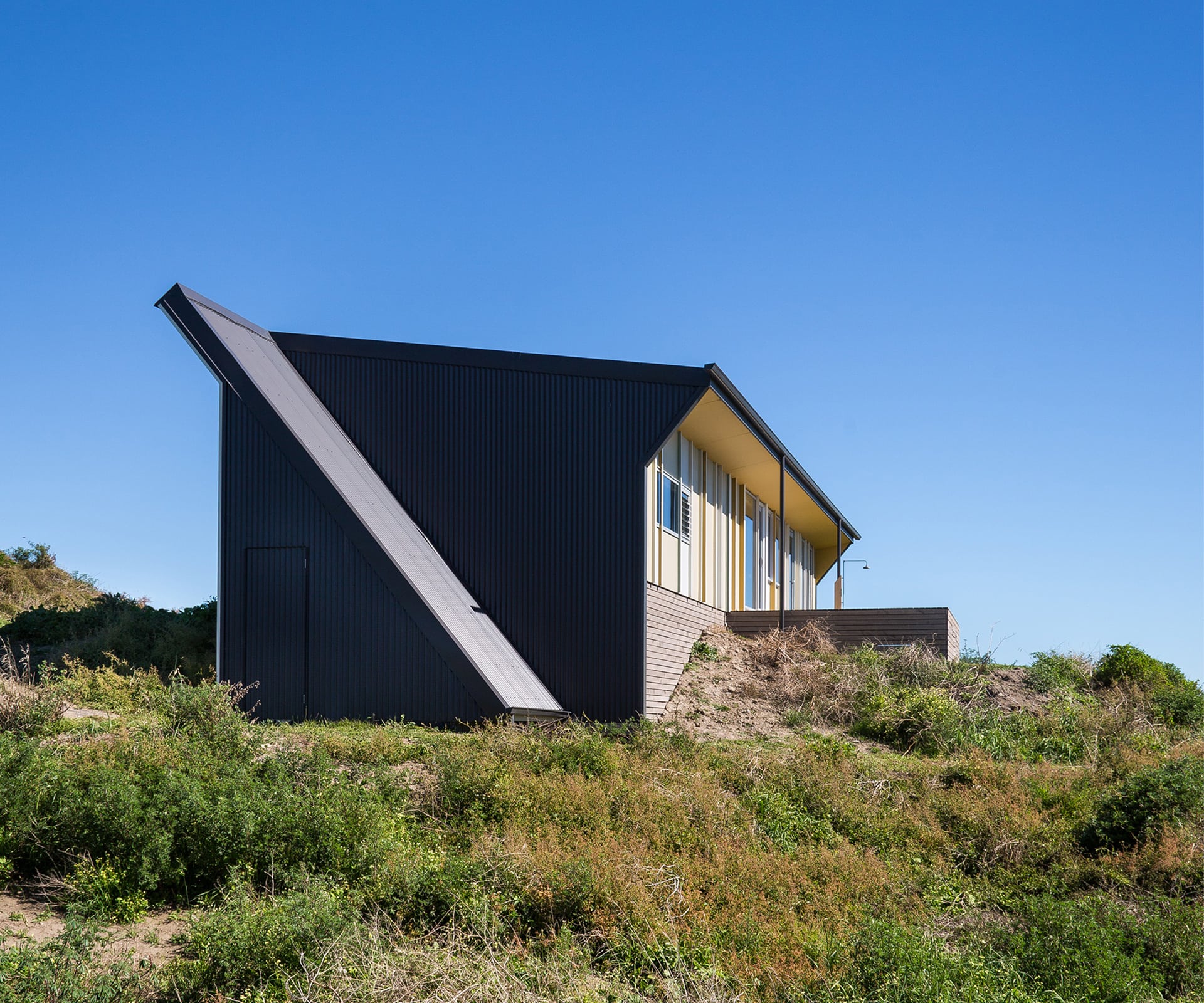Its coastal site proved a challenge but the outcome was a striking angular bach that the architects involved thought the owners would say “heck no” to

This angular build put a modern spin on the classic Kiwi bach
Q&A with Gerald Parsonson of Parsonson Architects:
You’ve been quietly playful with colours for the exterior battens?
A colour palette that we had to adhere to came with the subdivision. It’s quite muted and soft, no bright colours, but I wanted to give it the richness that some of our other beach houses have. So we painted the sides of some of the battens different colours. When you look at the house front on, the colours are muted. But on an angle, you get colour. It picks up on the grass thing – if you look at a blade of grass, green or dried, there will be myriad colours.
Are there extra costs involved in building on such coastal sites?
You’ve got to have water tanks and effluent disposal fields – about $30-40,000 before you build, whether it’s a large or small house. These are sand dunes and the house is on driven piles. The cost of piling for a simple house like this is around $10,000. We really thought long and hard about how we were going to do the foundations. We could have used a RibRaft, which is a concrete slab poured over polystyrene blocks. It holds itself together in an earthquake and floats like a ship on the sand dunes. Piles were a much more straightforward solution.
[gallery_link num_photos=”9″ media=”https://www.homemagazine.nz/wp-content/uploads/2018/12/TeHoroBach_Dec2018_6.jpg” link=”/real-homes/home-tours/classic-kiwi-bach-te-horo-home” title=”Read more about this home here”]
The sliding doors between the bespoke bunk beds have a fun, hidden detail?
Yes, we put them on marbles in the gap so the doors slide on them. Colin McCahon did that in his cottage in Titirangi and I’ve always wanted to use it.
The design is strongly individual. Did you worry that the clients might say ‘Hell no’?
Heck yeah. One of the things I say to my staff is that you are often the most nervous presenting the best designs because you think ‘Crikey, I reckon we’ve done something really good here’. People often don’t like it. Sometimes I’ll say, ‘Just let it sit there for a while and see what you think’. Sometimes, things that are initially a bit weird can have the legs to be much better later on. You lose a few, of course. I remember Ian Athfield talking about this – he had drawers of brilliant designs that were never built.




